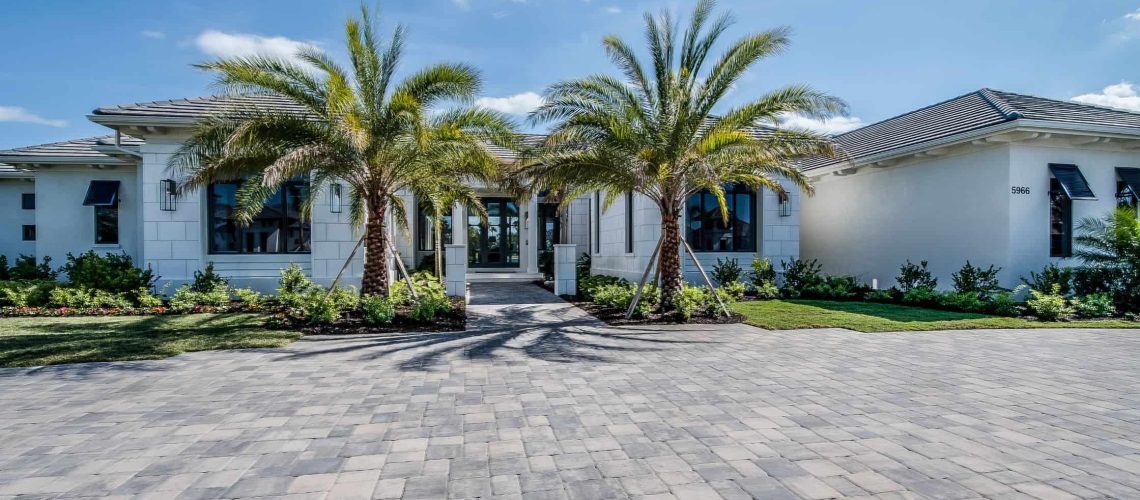Are you tired of your dull and uninspiring outdoor space? Ready to transform it into a captivating and functional haven?
Understanding the distinction between hardscaping and softscaping is where it all begins. Hardscaping, encompassing structures like patios, walkways, and retaining walls, serves a practical purpose in shaping your landscape.
Yet, what about the living elements? Softscaping, with its lush greenery and vibrant flora, adds a touch of life and beauty to your outdoor oasis.
But how do you strike the perfect balance? Join us as we explore the contrasting worlds of hardscaping and softscaping, revealing the key factors that will help you achieve the landscape of your dreams.
Defining Hardscaping Elements
Getting to the bottom of hardscaping elements is essential for creating a functional and visually appealing landscape design. Incorporating hardscaping into your landscape design has numerous benefits. It not only adds structure and definition to your outdoor space but also increases its overall usability.
Creative ways to incorporate hardscaping features in your outdoor area include building a patio with a firepit or installing a decorative walkway. When choosing hardscaping materials, it’s important to consider your specific needs, such as durability, maintenance, and aesthetic appeal. The right materials can enhance the functionality and usability of your outdoor area, providing a long-lasting and visually pleasing space.
However, there are common hardscaping mistakes to avoid when planning your landscape design, such as poor drainage or improper installation. By understanding these elements and avoiding mistakes, you can create a stunning and functional landscape design that will be the envy of your neighborhood.
Exploring Softscaping Components
When exploring softscaping components, it’s important to consider the various types of plants that can be incorporated into your landscape design. One key consideration is the importance of soil quality in softscaping. Good soil provides the necessary nutrients and moisture for plants to thrive.
Another factor to remember is designing a softscape for a small space. Utilize vertical gardening techniques and choose plants that won’t overgrow the area.
Additionally, incorporating native plants into your softscape design can enhance the natural beauty of your landscape while providing habitat for local wildlife. To create a sustainable softscape, opt for water-efficient plants that require less irrigation.
Selection of Land Cover and Accent Plants
To enhance the overall aesthetic of your landscape, carefully select the appropriate land cover and accent plants. Choosing the right plants is essential for creating a beautiful and functional outdoor space. Here are some key factors to consider when selecting your plants:
Landscaping with groundcover: Groundcover plants, such as creeping thyme or vinca minor, can add texture and color to your landscape while also helping to control erosion and suppress weeds.
Benefits of using accent plants: Accent plants, like ornamental grasses or flowering shrubs, can create focal points and add visual interest to your garden. They can also provide habitat for pollinators and attract wildlife.
Creating a color scheme with flowering plants: Incorporating flowering plants with different bloom times and colors can create a dynamic and vibrant landscape throughout the seasons. Consider using a mix of annuals, perennials, and bulbs to achieve a continuous display of colors.
Softscaping for all seasons: Selecting a variety of plants that thrive in different seasons ensures that your landscape will look appealing year-round. Choose plants with interesting foliage, attractive bark, or winter blooms to add beauty during the colder months.
Maintenance and Management of Softscaping
Maintaining and managing your softscaping requires regular care and attention to ensure the health and beauty of your plants.
To start, it’s important to provide seasonal plant care. This involves understanding the specific needs of your plants during different times of the year, such as protecting them from frost or providing extra hydration during hot summer months.
Additionally, mulching can provide numerous benefits, such as retaining moisture, preventing weed growth, and improving soil health.
When it comes to pruning techniques, it’s crucial to learn proper methods to promote plant growth and maintain their shape.
Sustainable watering practices, such as using drip irrigation or rainwater harvesting, can help conserve water while keeping your plants hydrated.
Lastly, soil testing is essential to determine the nutrient levels and pH balance, allowing you to make necessary adjustments for optimal plant growth.
Transform Your Outdoor Space with CWG Landscape’s Expertise in Landscape Maintenance and Installation
At CWG Landscape, we understand the importance of creating a stunning and functional outdoor space. With our comprehensive landscape maintenance and installation services, we can turn your backyard into a breathtaking masterpiece.
Our team of experts, like skilled symphony conductors, will orchestrate the perfect combination of hardscaping and softscaping elements, ensuring a solid foundation and vibrant colors that bring life to your oasis.
Whether you have a residential or commercial property, our professionals have the knowledge and experience to design and maintain a landscape that exceeds your expectations. We use only the highest quality materials and plants, ensuring a visually stunning result that transforms your space.
With our meticulous maintenance services, your landscape won’t only remain beautiful but also functional and inviting.
At CWG Landscape, we believe that your imagination should bloom, and we’re dedicated to making your backyard paradise a reality. Trust in our expertise and let’s create a visually stunning landscape tailored to your unique needs.
Contact us today to schedule a consultation and discover how our landscape maintenance and installation services can enhance your outdoor space.

